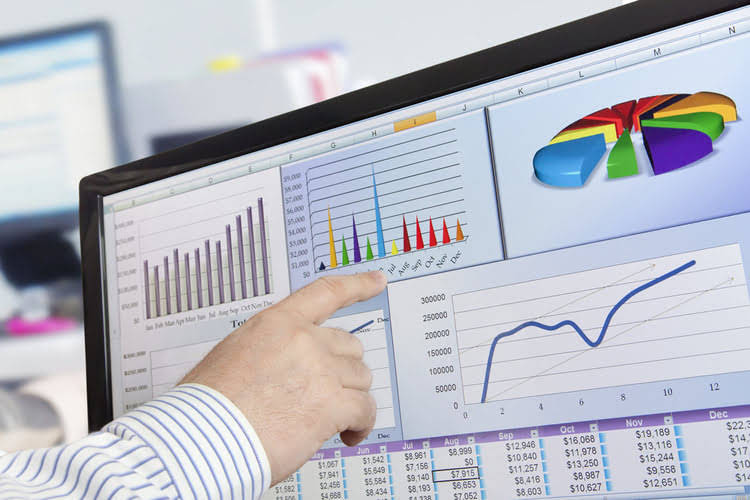
Yarilet Perez is an experienced multimedia journalist and fact-checker with a Master of Science in Journalism. She has worked in multiple cities covering breaking news, politics, education, and more. The following figures have been taken from the balance sheet of GHI Company. Download our FREE whitepaper, Use Financial Statements to Assess the Health of Your Business, to learn about the three financial statements you should be keeping an eye on. Working with an adviser may come with potential downsides such as payment of fees (which will reduce returns). There are no guarantees that working with an adviser will yield positive returns.
The Quick Ratio Formula
It’s important to include other financial ratios in your analysis, including both the current ratio and the quick ratio, as well as others. More importantly, it’s critical to understand what areas of a company’s financials the ratios are excluding or including to understand what the ratio is telling you. Some may consider the quick ratio better than the current ratio because it is more conservative. The quick ratio demonstrates the immediate amount of money a company has to pay its current bills. The current ratio may overstate a company’s ability to cover short-term liabilities as a company may find difficulty in quickly liquidating all inventory, for example.

What is the quick ratio and how to calculate it?
Illiquid assets are excluded from the calculation of the quick ratio, as mentioned earlier. The quick ratio compares the short-term assets of a company to its short-term liabilities to determine if the company would have adequate cash to pay off its short-term liabilities. Since the current ratio includes inventory, it will be high for companies that are heavily involved in selling inventory. For example, in the retail industry, a store might stock up on merchandise leading up to the holidays, boosting its current ratio.

Do you own a business?
- Although most financial analysts agree that a quick ratio higher than 1.0 is acceptable, you should know that its optimal value depends on the branch of the industry.
- A very high quick ratio, such as three or above, is not always a good thing.
- Both ratios include accounts receivable, but some receivables might not be able to be liquidated very quickly.
- The quick ratio provides a stricter test of liquidity compared to the current ratio.
- It can also include short-term debt, dividends owed, notes payable, and income taxes outstanding.
This liquidity ratio can be a great measure of a company’s short-term solvency. As an investor, you can use the quick ratio to determine if a company is financially healthy. «The higher the ratio result, the better a company’s liquidity and financial health is,» says Feldman. Both types of liquidity ratios are calculated under a hypothetical scenario in which a company must pay off all existing current liabilities that have come due using its current assets. This may include cash and savings, marketable securities (stocks and bonds), and accounts receivable (money owed to the company by customers and clients).
Quick Ratio: Definition, Formula and Usage
The higher your quick ratio, the better your business will be able to meet any short-term financial obligations. A quick ratio of 1 means that for every $1 in current liabilities, you have $1 in current assets. A quick ratio above 1.0 indicates a company has enough quick assets to cover its current liabilities.
The quick ratio, instead, focuses on very short-term, highly liquid assets, keeping inventory and prepaid expenses out. In the example above, the quick ratio of 1.19 shows that GHI Company has enough current assets to cover its current liabilities. For every $1 of current liability, the company has $1.19 of quick quick ratio equation assets to pay for it. Quick assets are assets a company expects to convert to cash in 90 days or less. Current liabilities are obligations the company will need to pay within the next year. Higher quick ratios are more favorable for companies because it shows there are more quick assets than current liabilities.
- This means it may suffer from illiquidity which could lead to financial distress or bankruptcy.
- Marketable securities are financial instruments that can be quickly converted to cash, such as government bonds, common stock, and certificates of deposit.
- Current liabilities are short-term debt that are typically due within a year.
- Then, divide your quick assets by current liabilities to find your quick ratio.
- Quick assets refer to assets that can be converted to cash within one year (or the operating cycle, whichever is longer).
- In fast-moving industries, a company’s warehouse of goods may quickly lose demand with consumers.
Ask Any Financial Question

A Quick Ratio of 1.0 or higher is generally considered healthy, indicating a company can meet its short-term obligations without selling inventory. Suppliers and creditors often use the Quick Ratio to assess whether a business can meet its financial commitments promptly. A high Quick Ratio suggests that a company is less likely to default on payments, which can build trust and lead to favorable credit terms.
Quick assets
Accounts payable is one of the most common current liabilities in a company’s balance sheet. It can also include short-term debt, dividends owed, notes payable, and income taxes outstanding. It does not take into account all aspects that can impact a company’s liquidity position.
Immediate insight into financial health

